A Heart Start for Milkshake
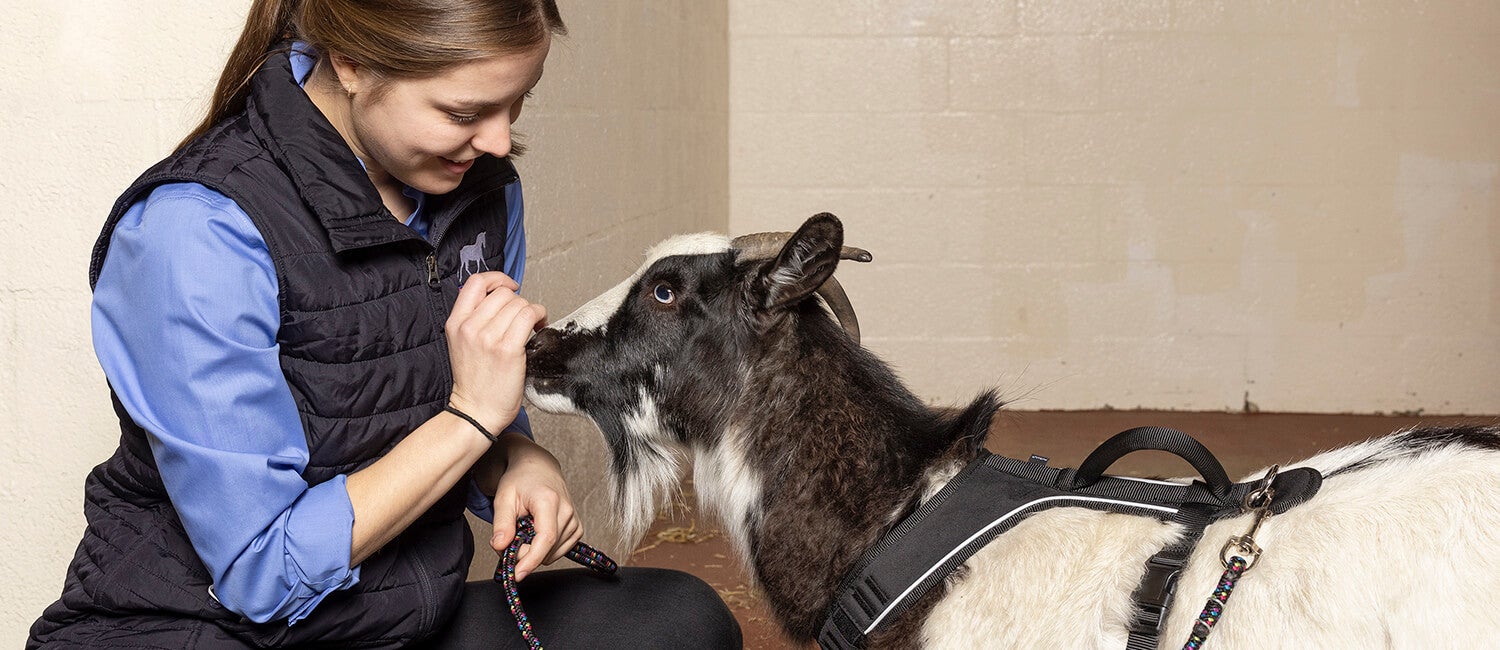
On November 20, 2020, Milkshake arrived at Penn Vet’s New Bolton Center clinging to life.
A few hours earlier, the Tennessee fainting goat, just seven months old at the time, was acting the “spoiled princess she is” to owners Jessica Kurczeski and Kurczeski’s husband, Rick Bodine. Nothing signaled the anguishing 24 hours to come.
“I’m very attached to all my animals, but Milkshake is special,” said Kurczeski. “Her mother shunned her at birth, so we bottle fed the helpless little baby and raised her in the house. Today, she lives outside, where she gets special treatment, but still loves to cuddle and comes running when we call.”
This human-animal bond is how, on a chilly November morning, Kurczeski knew something was wrong on the couple’s small Bucks County farm. Milkshake usually waits at her pen’s gate for the morning feeding. But she wasn’t there and didn’t come when Kurczeski called.
“She was lying under a spool barely breathing,” said Kurczeski. “Our field service veterinarian, Dr. Jennifer Platt, VMD’91, was on vacation and unable to get to our farm. She said to go immediately to New Bolton Center because it has all the equipment, technology, and experience animals like Milkshake need.”
The Ride When Time Stopped
A distraught Kurczeski loaded the barely conscious kid into her truck. “Time seemed to stop — the ride to New Bolton Center felt endless. Milkshake has so much spirit normally, and she was so quiet and clearly suffering. One of the Penn Vet staff called to check on us while I was driving. They were really concerned about Milkshake and about me and how I was doing. I really appreciated this.”
Roughly an hour later, Kurczeski arrived at the large animal hospital, where Internal Medicine resident Dr. Laurence Leduc and an emergency care team met her and Milkshake.
“We were afraid Milkshake wouldn’t survive the drive and had prepared for a young and critical patient,” said Leduc.
On arrival, the kid had a boost of adrenaline and walked a few steps. It didn’t last long. Within minutes she was down and vocalizing in a concerning way.
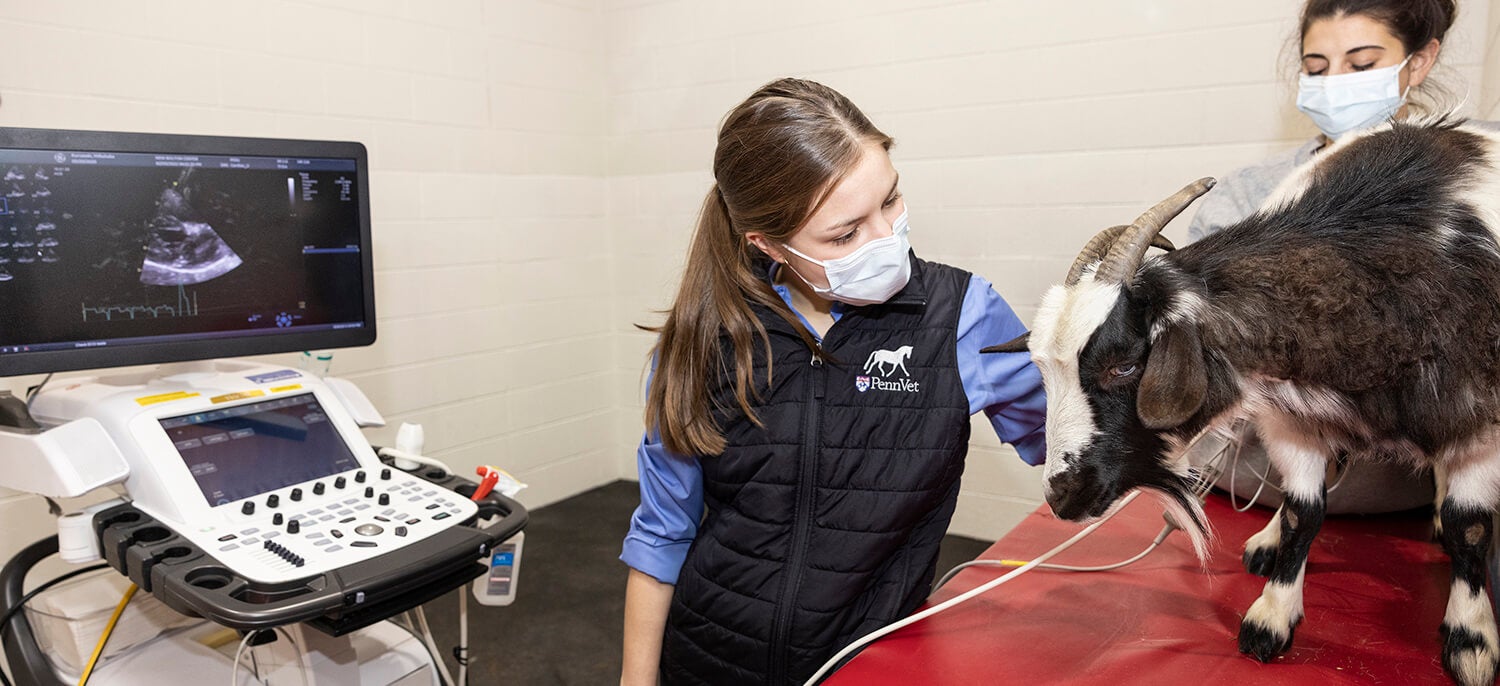
“Her breathing was rapid, and her mucous membranes were blue,” said Leduc. “Jessica gave us a complete rundown of her recent activity and nothing seemed harmful or out of the ordinary — she hadn’t ingested anything toxic or had any sort of accident.”
Because of the kid’s erratic breathing, Leduc first considered a respiratory condition and had Milkshake’s lungs radiographed. The radiographs were normal.
After ruling out something respiratory, Leduc and her colleagues stabilized Milkshake with intranasal oxygen and intravenous fluid therapy.
A Long, Long, Dark Night
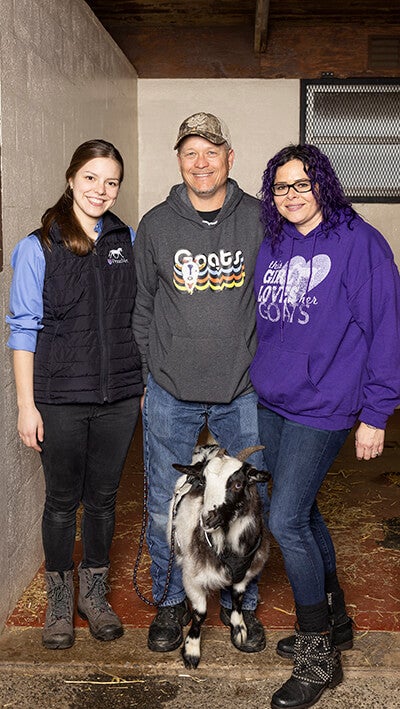
Milkshake’s blood work showed a severely compromised state.
“I’ve never seen blood work so terrible — these results were absolutely incompatible with life,” said Leduc. “We knew this animal was dying and to understand why we performed a neurologic evaluation, thoracic radiographs, and an abdominal ultrasound, which were unremarkable. An ECG was also obtained and showed atrial fibrillation and marked tachycardia — her heart rate was extremely high and heart rhythm was abnormal — suggesting the heart was the root cause of her critical state.”
It was now evening. “I told Jessica we were doing all we could but to be prepared that Milkshake may die overnight,” said Leduc.
As the hours rolled by, the goat’s heart rate spiked at a very high 200 beats per minute and bottomed at a very low 40 beats per minute.
“At midnight, I consulted with Dr. Slack, one of our cardiologists,” said Leduc. “She helped manage Milkshake’s case.”
Overnight, Milkshake developed more arrhythmias, and her heart stopped several times. “We tried a few anti-arrhythmic medications before one of them — metoprolol — offered the first glimmer of hope,” said Leduc.
“After one dose, Milkshake’s heart rate and rhythm stabilized around 130-140 beats per minute. This was a positive sign, although we couldn’t be sure she would survive.”
Facing a long, tenuous night, Leduc wanted to stay near her patient. “I rested on a cot in her stall until 4am. When I left, she appeared more stable but had a long road ahead. She also had an extraordinary team of nurses supporting her all night.”
With Morning Comes Light
At home later that morning, Leduc woke to find a message from one of Milkshake’s nurses with a picture of the little goat standing.
“This was a great sign,” she said.
“Dr. Leduc sent me the photo,” said Kurczeski. “She had communicated with me throughout the previous day about Milkshake’s condition and prognosis so to see this picture of my baby girl was the best news I could get.”
Although Milkshake’s condition improved during the day – she started walking steadily and eating and drinking on her own — her heart rate was still increased, and she continued to have atrial flutter (or an irregular heart rhythm).
“We managed her medication to treat the arrythmia,” said Leduc. “She slowly gained strength and her heart rate became more stable. Once we were satisfied that she was ready, we discharged Milkshake to home care with medication.”
Twice daily on the farm, Kurczeski and Bodine administered a beta blocker medication for the arrythmia. On three subsequent follow-up visits to New Bolton Center, Milkshake’s heart rate was normal, and she was otherwise healthy.
“Her heart is doing great and there are no signs her life expectancy will be different than other goats — she has a normal goat heart, so we are very excited,” said Leduc.
A Willing Heart
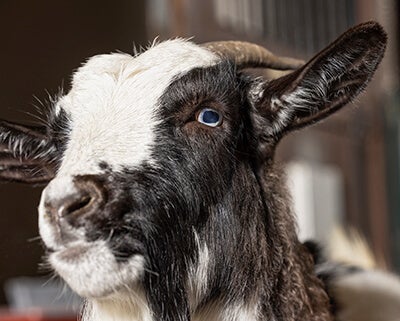
“Milkshake was dying when she came into our care,” said Dr. JoAnn Slack, service chief of Cardiology and Ultrasound and consulting cardiologist on the case.
“When an animal arrives at New Bolton Center, we first think of what the most likely problem is and start there. The patient’s age is part of our thinking. Little ones haven’t lived long enough to develop the degenerative diseases adults get. Pediatric and juvenile problems are usually things they’re born with, for example a congenital heart defect when it’s a cardiac issue.”
Kurczeski and Bodine are willing do whatever it takes to help Milkshake and their other goats. In February 2022, Kurczeski rushed a 12-day-old, four-and-a-half-pound kid — Sweetheart — to New Bolton Center when the goat stopped eating. “Dr. Leduc and her colleagues saved her life too,” said Kurczeski. “Penn Vet is an amazing place. Everyone cares about the animals and the owners – there’s so much knowledge and compassion; I can’t say enough about how wonderful it is.”
As happened with Milkshake and Sweetheart, New Bolton Center clients and patients benefit from a team of specialists — many dual board-certified in emergency & critical care medicine and surgery — that can attend to cases across a variety of species and ages.
“There is so much we can do when an owner is invested,” said Slack. “It also helps when a patient is willing to let us do everything we need to. Milkshake was willing, and she is alive today because the pieces fell into place — the right care at the right time, committed owners, and a patient ready to live.”
More from Bellwether

From Bird Fractures to Human Shoulders
As a child in Central Pennsylvania, Stephen Peoples, V’84, loved science and the natural world.
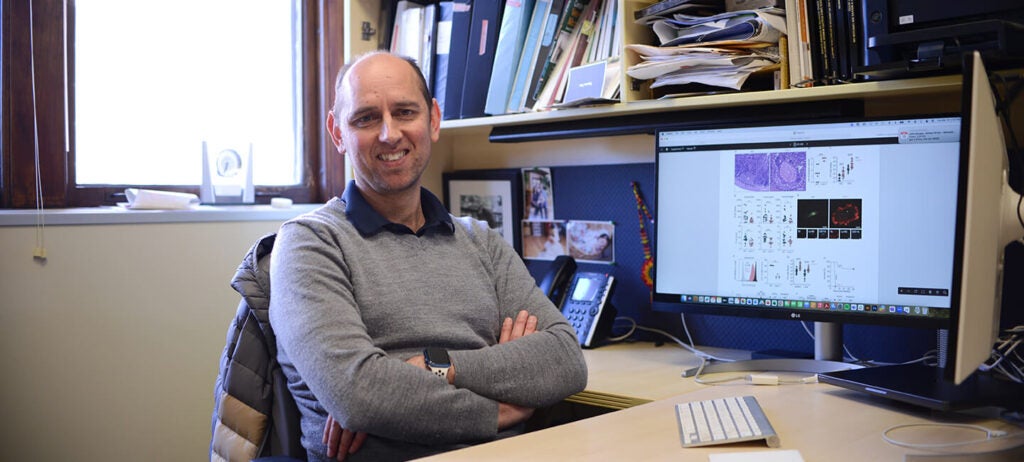
In the Office with Igor Brodsky, PhD
In his Philadelphia-based lab, Igor Brodsky is on a mission to understand how the body recognizes and responds to invading organisms that cause several diseases.
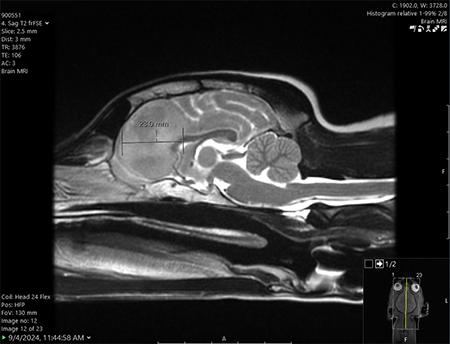
One Tiny Dog’s Outsized Contribution to Brain Surgery
Geddy Lee has lived a big life for a little dog. As a puppy, the tiny terrier mix was abandoned in Mississippi during a high-speed car chase. Rescued by law…
